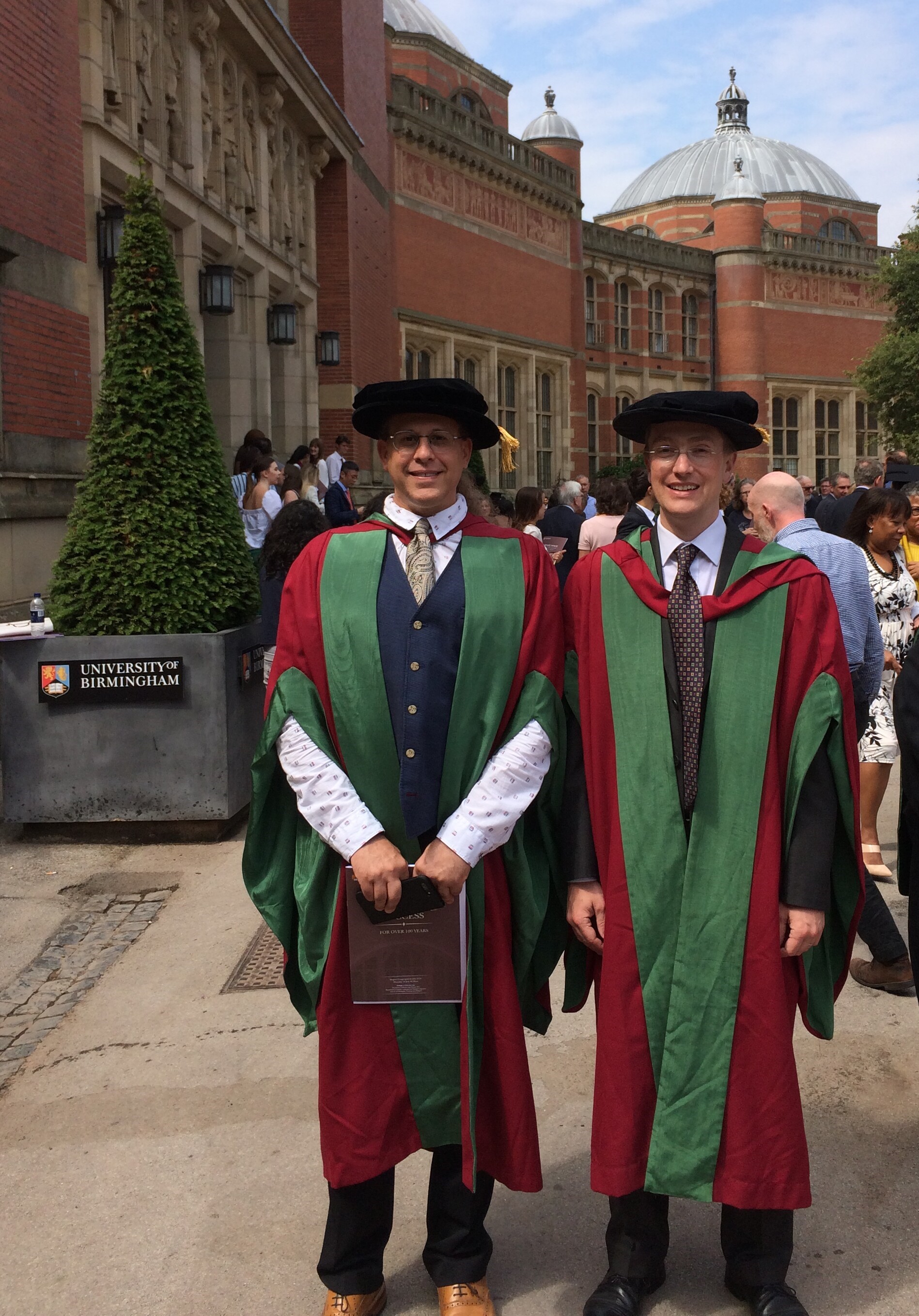
Congratulations to Troy Griffitts and Alan Taylor Farnes, who received their PhD degree at the University of Birmingham graduation ceremony today.
Both Troy and Alan made the journey from the USA to come and study at Birmingham, with Professor David Parker and Professor Hugh Houghton. Today marks the culmination of several years of research, as they were awarded their degrees along with other graduates of the School of Philosophy, Theology and Religion. Troy was able to visit and receive his degree in person, whereas Alan received it in absentia. Details of their theses are given below, and the full texts are now available to read on the University's etheses portal.
Troy is pictured on the right with his lead supervisor, Professor Hugh Houghton.
This project was responsible for developing the Virtual Manuscript Room Collaborative Research Environment (VMR CRE), which offers a facility for the critical editing workflow from raw data collection, through processing, to publication, within an open and online collaborative framework for the Institut für Neutestamentliche Textforschung (INTF) and their global partners while editing the Editio Critica Maior (ECM)-- the paramount critical edition of the Greek New Testament which analyses over 5600 Greek witnesses and includes a comprehensive apparatus of chosen manuscripts, weighted by quotations and early translations. Additionally, this project produced the first digital edition of the ECM. This case study, transitioning the workflow at the INTF to an online collaborative research environment, seeks to convey successful methods and lessons learned through describing a professional software engineer’s foray into the world of academic digital humanities. It compares development roles and practices in the software industry with the academic environment and offers insights to how this software engineer found a software team therein, suggests how a fledgling online community can successfully achieve critical mass, provides an outsider’s perspective on what a digital critical scholarly edition might be, and hopes to offer useful software, datasets, and a thriving online community for manuscript researchers.
In the first chapter of this work, I provide an introduction to the current discussion of scribal habits. In Chapter Two, I discuss Abschriften-or manuscripts with extant known exemplars-, their history in textual criticism, and how they can be used to elucidate the discussion of scribal habits. I also present a methodology for determining if a manuscript is an Abschrift. In Chapter Three, I analyze P127, which is not an Abschrift, in order that we may become familiar with determining scribal habits by singular readings. Chapters Four through Six present the scribal habits of selected proposed manuscript pairs: 0319 and 0320 as direct copies of 06 (with their Latin counterparts VL 76 and VL83 as direct copies of VL 75), 205 as a direct copy of 2886, and 821 as a direct copy of 0141. I discuss in Chapter Four the need to better understand the scribal habits of manuscripts written by scribes who wrote in their non-native language. Additionally, I conclude that 205 and 2886 are, in fact, not copies of one another. In the conclusion, I argue that there is no common scribal habit shared by all scribes except that this study has not found a scribe who adds more words than they lose. Additionally, textual critics should place greater emphasis on the roles played by patrons and readers of the text rather than on scribes alone.
